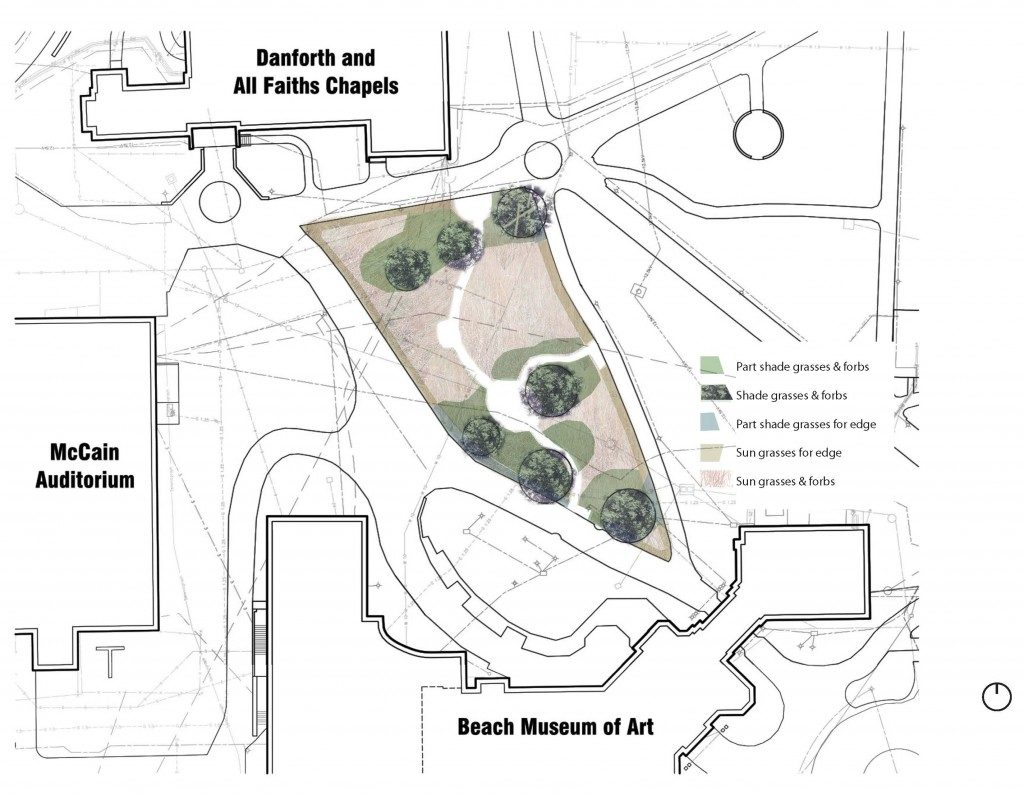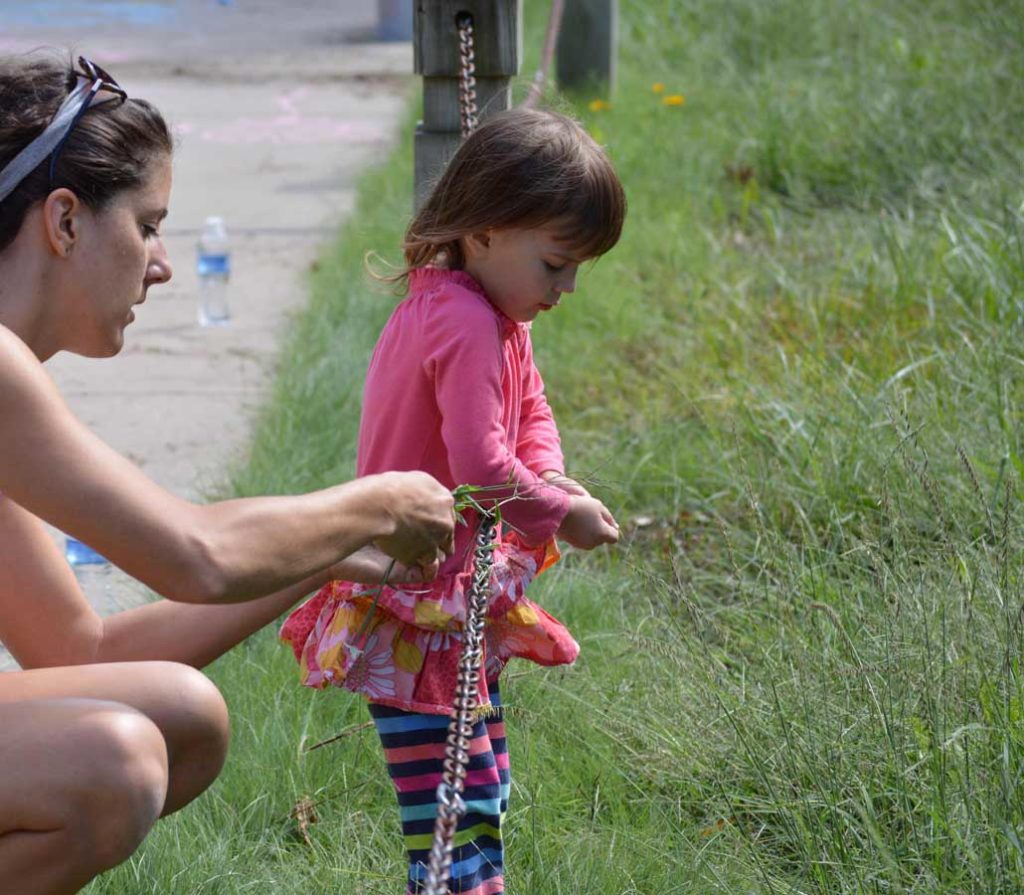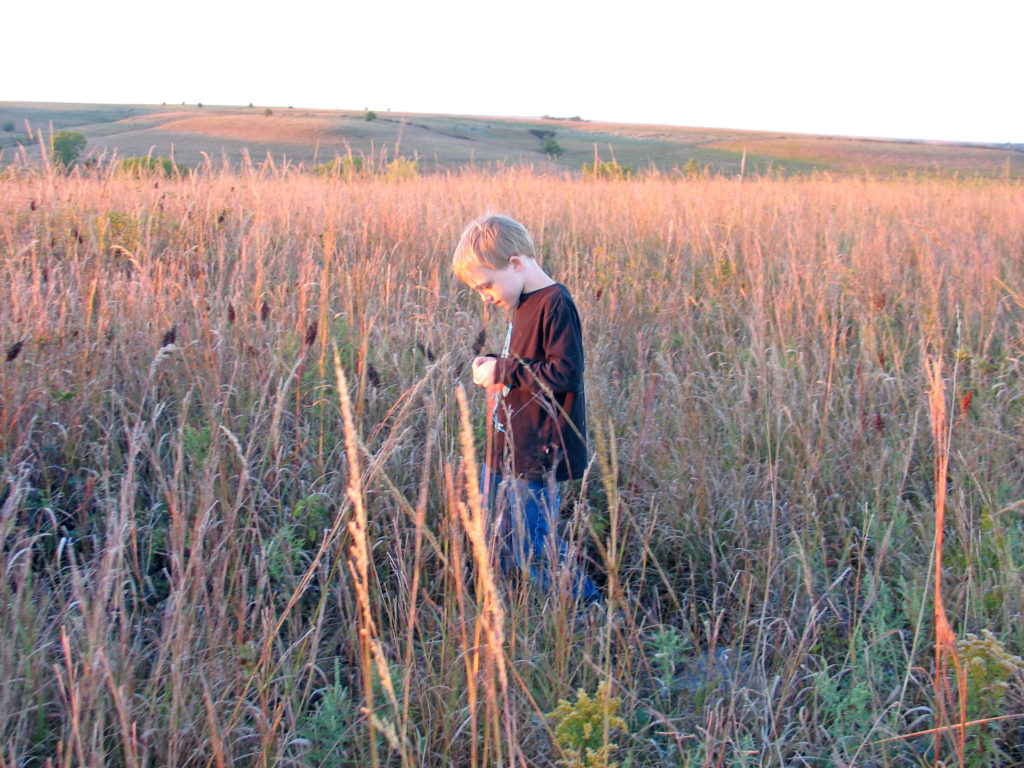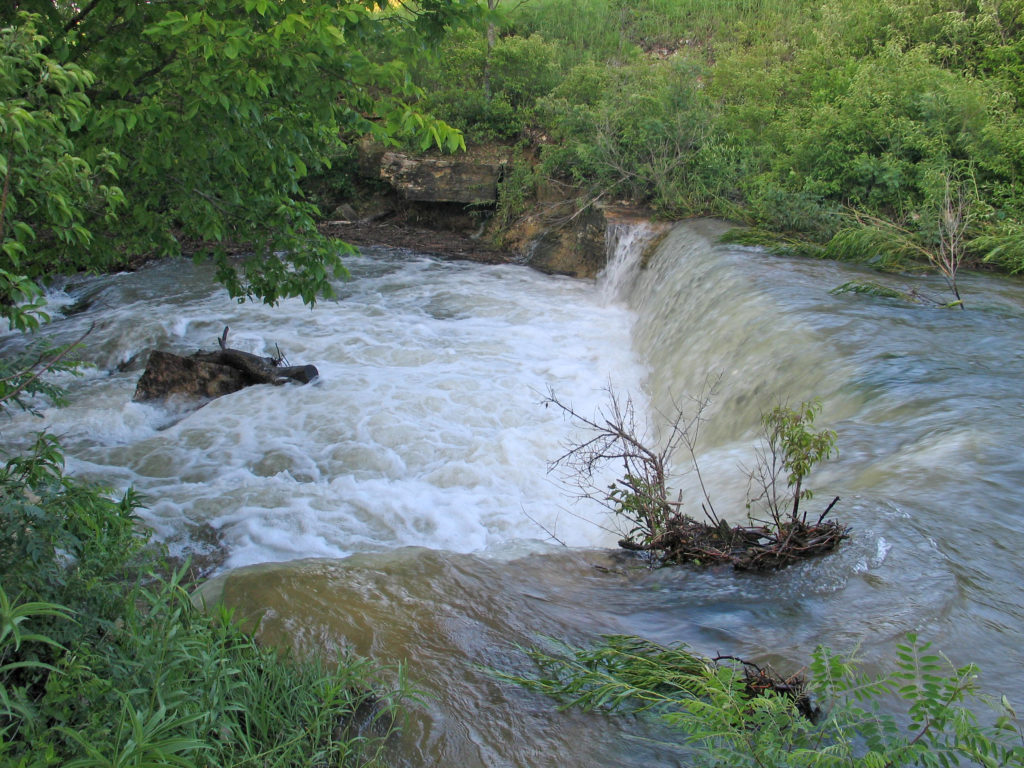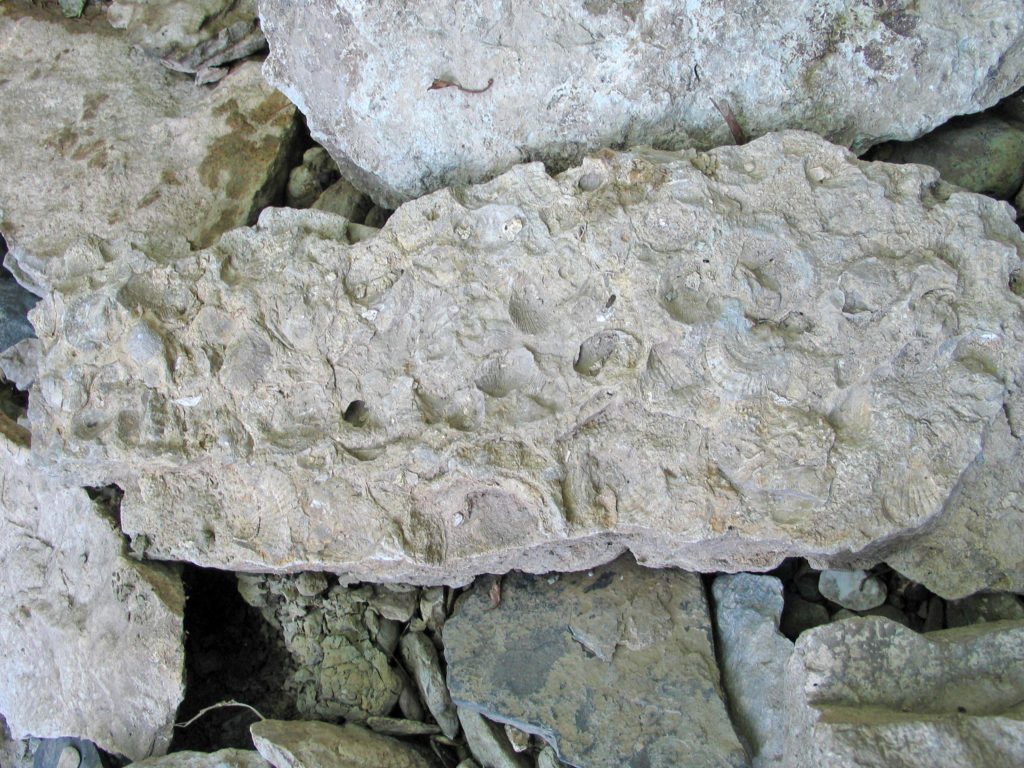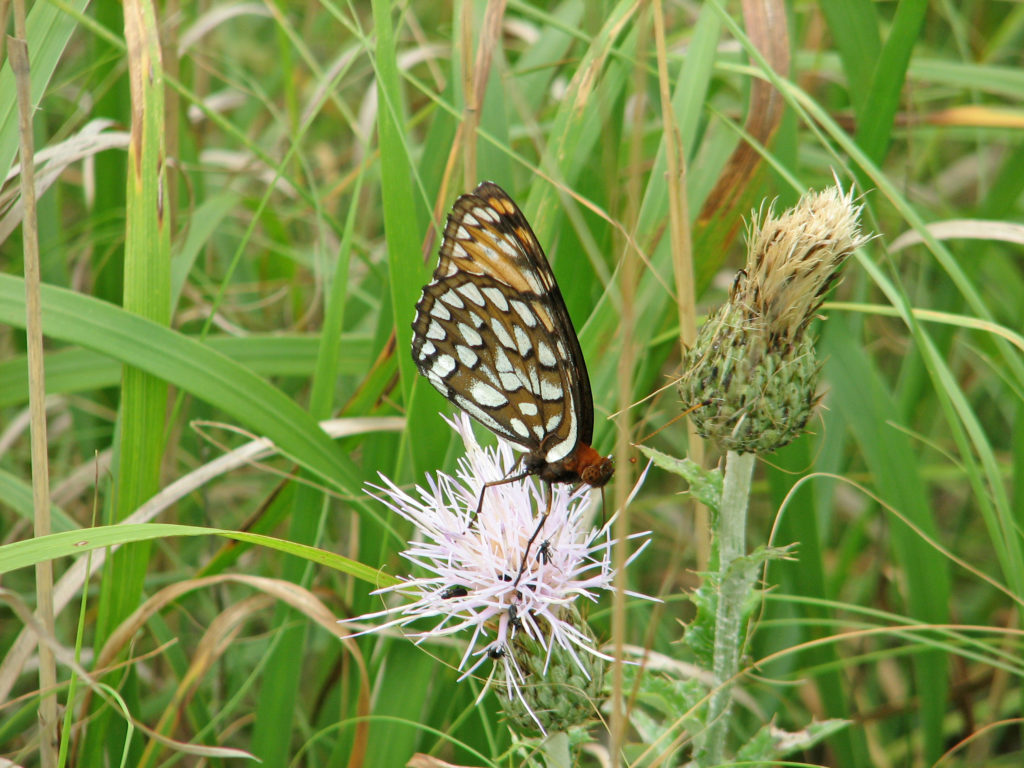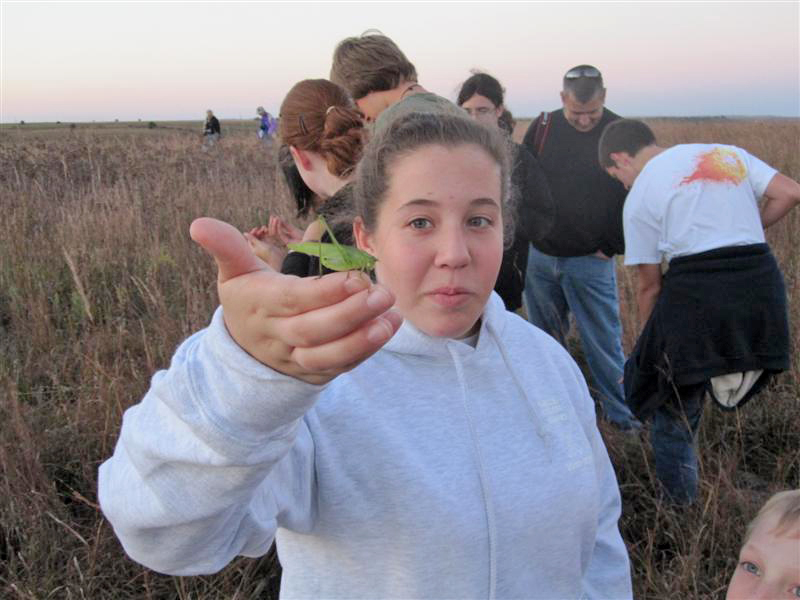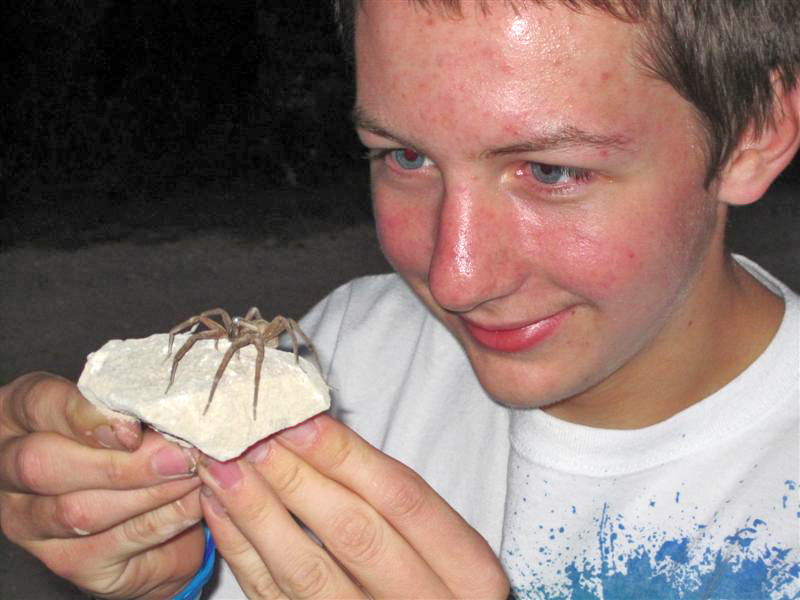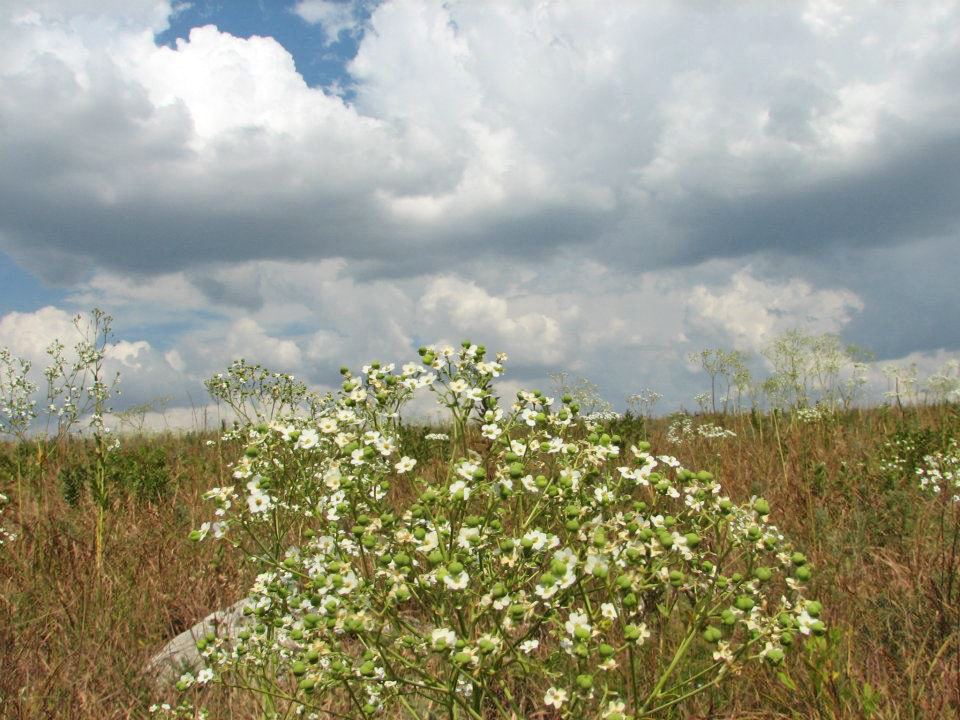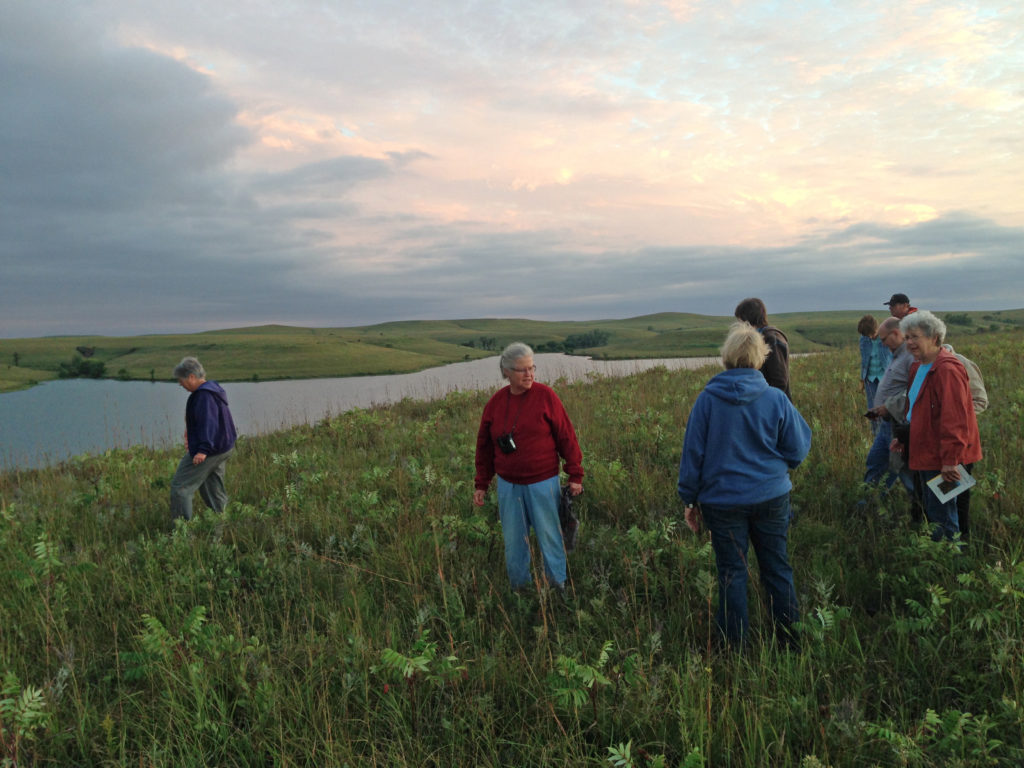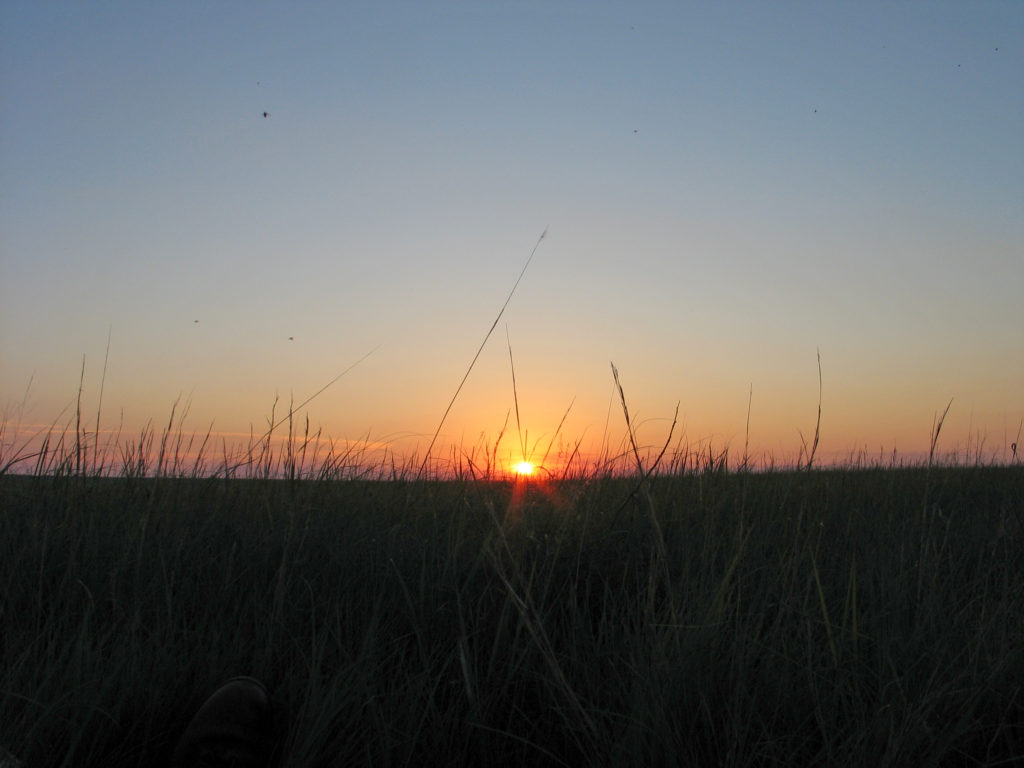I heard a great presentation this last Saturday entitled “10 Lessons for Urban Native Plant Meadows” by Katie Kingery-Page, Kansas State University (KSU) faculty member in the Department of Landscape Architecture and Regional & Community Planning. Katie was the keynote speaker at the Kansas Native Plant Society’s Annual Wildflower Weekend and the message fit perfectly with the weekend’s theme of “Native Plants in City Settings”.
I find Katie’s background of fine art, landscape design, and ecology intriguing. When Katie self-introduced as someone who sees landscape architecture as the design and stewardship of the exterior built environment and that doing so with native plants grounded the experience through a sense of place, I knew that this presentation was going to speak to me.
Katie’s insights in this presentation were based on experiences with “The Meadow” Project in front of the Beach Museum of Art on the KSU campus. From 2013-16, Katie and a team of volunteers converted a half acre of neglected turf into a native plant meadow. 10 lessons learned from this process were as follows:
1. Build A Coalition for the Life of the Project
It takes all kinds of people to complete a big project, and she showed a diagram of a “volunteer tree” she created.
2. Know the Place
Their planting list started with an extensive Flint Hills species template of the plants found at nearby Konza Prairie and was carved down to the resulting planting mix. Hackberry trees removed from the planting site were milled into everything from benches to mushroom-growing media.
3. Let the Team Guide the Values
Their team developed a mission statement and goals including that the site would integrate art and science and be a living laboratory that would minimize the usage of water and chemicals. An outcome of this plan was to forego the conventional use of killing existing vegetation with glyphosate and instead turned to compost smothering and mechanical scraping.
4. Develop A Thick Skin…Use Your Tricks
Have patience and don’t expect an instant landscape. Using flashy, early successional flowering plants such as the annual species Plains coreopsis (Coreopsis tinctoria) – the “bacon of plants” – helps distract onlookers that might otherwise see the weedy nature of the early stages of a planting.

Early successional, flowering “bacon” or “eye candy” plants Plains coreopsis (yellow) and beebalm (Monarda fistulosa). (Image by Katie Kingery-Page)
5. Tell the Project Story
Stories of these projects need to be told and can be done so through various media. Photos, drawings, and interactive touch tables at the Beach Museum were all used to tell The Meadow Project story.
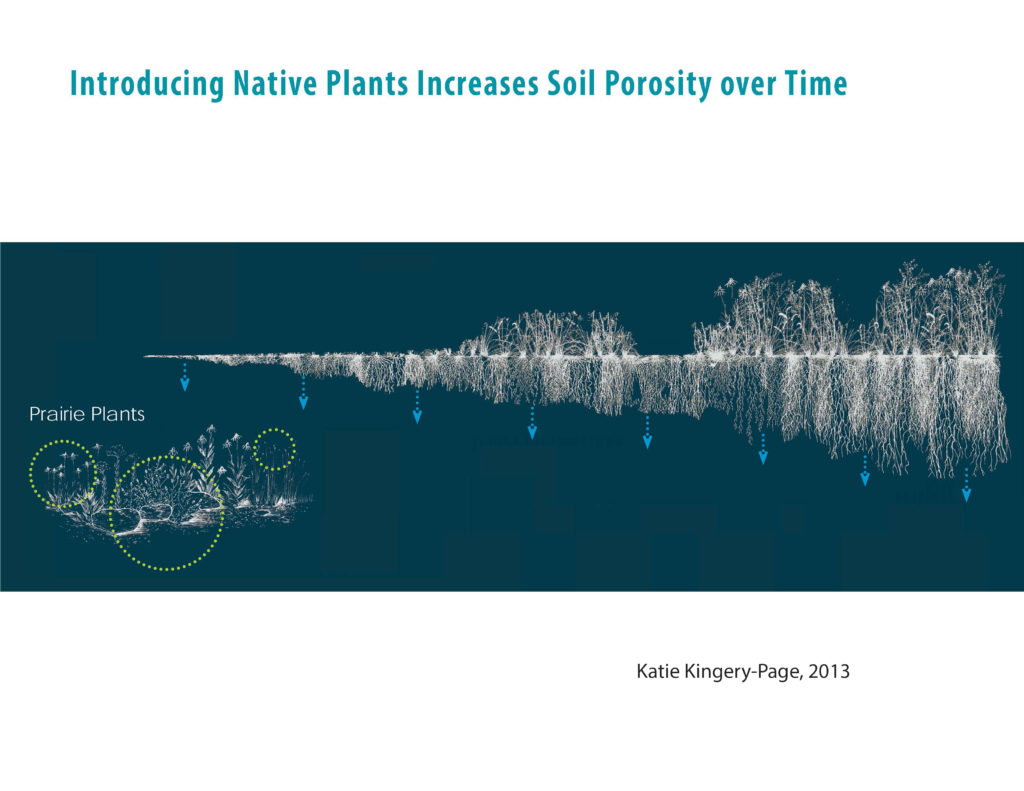
Root development and above ground biomass increase over time, which also leads to increased soil porosity.
6. Connect to Volunteers’ Joy
Volunteer efforts were critical to the success of the project and instead of “work days”, they had “convene with monarch days” where learning experiences were an attractive part of the labor-filled get-togethers.
7. Put A Price on Labor
Weeding is skilled labor amounting to “surgical plant removal” and it should be rewarded. However, if money can’t be given, then at least try to find ways to acknowledge the people helping.
8. Embrace Imperfection
Native landscaping is perfectly imperfect and the inevitable weeds can be seen as beautiful too. Learning strategies that aid perception of such projects include maintaining a mowed edge that is critical to the perceived success of otherwise “messy” native landscapes.
9. Make Your Project for the Message of Conservation
Such projects are multi-faceted in their environmental benefits, and assessment measures should broadly include plants, soils, stormwater, wildlife, and more.
Restoration vs. Conservation – Katie used to use the word “restoration”, but there is a danger in implying that this process can fix all impacts to a diverse remnant plant community. Perhaps “conservation” is better with a focus on ecosystem functions such as soil structure, stormwater infiltration, etc.
10. Be A Champion…Stay All In
Katie learned early on from school gardening projects that such endeavors need project champions to carry the project through.

“The Meadow” Project. Long view toward the Beach Museum of Art. (Image courtesy of K-State Communications and Marketing)
____________________
The 10 lessons in this presentation were familiar to me in a variety of ways. From 2003 to 2008 at Dyck Arboretum, our staff and an extensive team of volunteers and college student interns collected seed from local prairie remnants and planted the 13-acre Prairie Window Project. Distinct examples come to mind of our project that relate to each of these lessons and I’ve blogged about various interpretations of that project over the years. It would be fun to come up with our own 10 lessons as well. I can tell you that, similar to The Meadow Project, it included the “design and stewardship of the exterior built environment and that doing so with native plants grounded the experience through a sense of place.”



